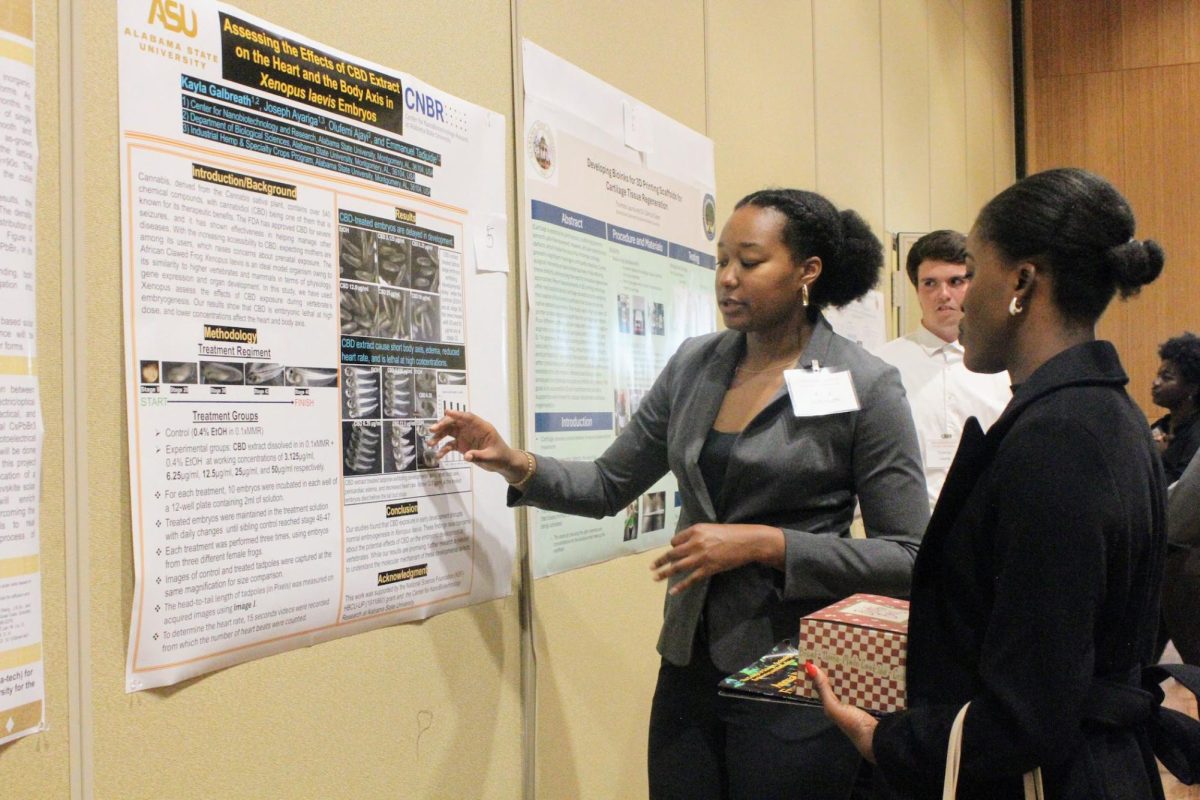Recently, on October 23, 2024, there was a senate meeting for passing the SGA budget. The SGA Senate has meetings, and some of them are recorded and posted on a social media app called Instagram. The Student Government Association (SGA) budget is more than just financial planning. It’s a powerful tool for driving student engagement, supporting organizations, assisting students in emergencies, and enhancing the college experience. With a total of $134,900, this year’s SGA budget has the potential to touch the lives of students in meaningful ways. To fully realize its impact, SGA can focus on clear goals: transparency, efficient allocation, and stronger communication with students.
This year’s budget covers eight main areas, each structured to address core student needs. Student compensation is $10,000 recognizing the time and effort of SGA senators; each senator receives $250 per semester, totaling $500 for the academic year. This compensation not only acknowledges their work but fosters leadership and accountability within SGA.
Student Support Fund is $12,750, a crucial safety net for students facing emergencies. This fund provides financial assistance for unexpected crises. For instance, if a dorm floods, a student could request up to $250 to cover temporary accommodations. By increasing awareness of this fund and ensuring students understand how to access it, SGA can expand its impact on students in challenging times.
Student Travel is $20,000 The SGA allocates funds for transportation to major events, such as the Port Classic and the Alabama A&M game, where students can support their school and participate in shared experiences. This initiative promotes inclusivity, allowing all students to attend regardless of financial background, fostering school spirit and pride.
SGA apparel is $3,000 Each member contributes $100 toward official SGA blazers or polo shirts, with $60 currently accounted for, leaving questions about the remaining $40. Clarifying the use of these funds can build trust within SGA, providing transparency around contributions.
Organization support is $20,000 Student organizations are at the heart of campus life, and each can apply for funding up to $2,500. By encouraging student-led events and initiatives, this allocation strengthens campus culture and provides students with opportunities to pursue their interests.
Contingency Fund is $10,000. The contingency fund gives SGA flexibility to respond to unforeseen needs. Having a reserve ensures SGA is financially prepared for any unexpected expenses, supporting stability across other budgeted areas.
Events budgets are $30,000 because events, such as the Hive Awards, recognize student achievements and encourage pride in campus culture. While these events are key to fostering student engagement, a portion of the budget could be used for smaller, frequent gatherings to increase interaction and involvement on a regular basis.
The current budget reflects a thoughtful approach to student needs, yet there is room for improvement in how it’s managed and communicated. Greater transparency in apparel spending: with $3,000 budgeted for apparel, SGA members have questions about why only $60 of their $100 contributions are reportedly used. Clarifying the purpose of the remaining $40—whether it’s reserved for future apparel needs or another purpose—would provide transparency, helping members understand how their contributions are used and strengthening trust in SGA’s management. It was confirmed some time in the meeting that the treasurer doesn’t know the exact amount of how much apparel they buy with the 100, but it is around 60, and the rest will be saved into the SGA fund.
Enhancing engagement through smaller events While the Hive Awards and other major events boost school pride, more frequent, smaller events could keep students engaged year-round. SGA could allocate part of its events budget to host monthly gatherings, casual meet-ups, or collaborative activities with student organizations. These gatherings allow students to regularly interact with SGA, building a sense of belonging and making SGA more accessible. Additionally, gathering student feedback through surveys could help SGA tailor events to better fit student interests.
Increasing Awareness of the Student Support Fund Although the Student Support Fund is a valuable resource, many students may not be aware of it or understand how to qualify. To make this fund more accessible, SGA could conduct a targeted outreach campaign, explaining the fund’s purpose and application process. By providing clear guidelines and examples of qualifying scenarios, like emergency travel or dorm facility issues, SGA can ensure the fund reaches students who need it most.
With careful planning, open communication, and responsiveness to student needs, the SGA budget can become a powerful force for positive change on campus. Providing updates on budget allocations, particularly for member-contributed funds like SGA apparel, builds accountability and trust within the organization. Consistent engagement and setting aside a portion of the event budget for ongoing, smaller-scale events can keep students connected to SGA and foster a stronger campus community.
A clear communication plan around the Student Support Fund’s eligibility and application process will make this resource more accessible, reaching students who need it most during challenging times. SGA has a responsibility to ensure that every dollar drives positive change, supports the campus community, and reflects the student voice. By focusing on transparency, engagement, and accessibility, SGA can elevate its budget from a simple allocation of funds to a resource that builds community, builds trust, and provides support for students in need. With thoughtful adjustments, the SGA budget can become a force for meaningful impact, resonating with students far beyond the numbers.












